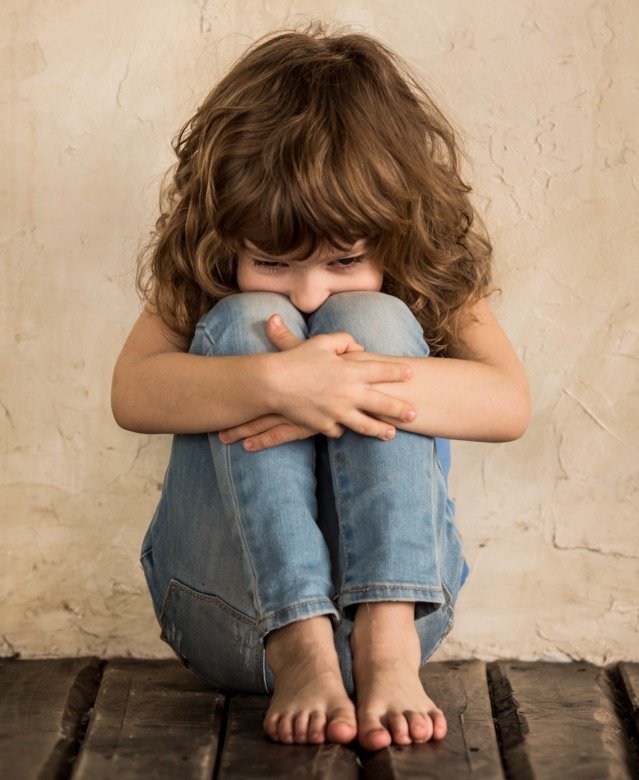A Day in the Life of a Child
Recently, I had the opportunity to visit with a woman who was homeless. For someone like me who has never lived in poverty or struggled just to survive, her story was eye opening.
Homelessness is one of the foundational problems for women in generational poverty. When we think of homeless, we often think of someone living under a bridge, but more often a constant rotation of shelters and temporary housing that defines the life of a child growing up in poverty.
Quickly, the child of a single mom in poverty will learn the difference between getting ahead and just getting by.
What does a day in the life of a child in poverty look like?
Constantly on the move (children who grow up in poverty will often be enrolled in as many as a dozen or more schools during their childhood).
Lack of food security, and never having enough to eat. What food is available is often of low quality (e.g. cheap frozen pizzas and boxes of mac and cheese).
Always a stranger often in strange homes where mom can find a place to stay for a while.
Alcohol, drugs, and drug use by the adults in the child’s life.
Few friends because of the constant moving.
The coming and going of men in their mother’s life. Sometimes, a man stays long enough he feels like a dad, but then he is gone. The child is constantly growing attached to a father figure and then losing contact with the father figure.
The constant fear and threat of child protective services and/or the police which can lead to periods of time living in foster homes and separated from mom.
A mother (or father) who is constantly in and out of jail or prison or is sentenced to longer prison terms.
Over your childhood years watching your mom deteriorate physically, mentally, and emotionally because of drug use and multiple toxic relationships.
As children grow through their upper elementary-age years (8-11 years old), they become much more independent and yet may find themselves as the primary caregiver of younger siblings. Moreover, no one is watching over them or caring for them.
Adults who yell at you, swear at you, and hit you, or worse.
Violence committed against their mom, by their mom, or in their home and neighborhood.
Falling further and further behind in school to the point that school becomes meaningless and a waste of time.
Keep in mind that all of the crisis events described above take place before a child reaches 18-years of age. Most women who consider Ruth Harbor today will acknowledge that they felt like they were on their own by the time they were 13-14 years of age. While there may be adults present in their life, the influence of these adults is often toxic and harmful to the child, either through neglect or abuse.
Where do you hope to be in five years?
This is a life-changing question for a young woman who has never dared to hope or dream about the future before.
Helping women overcome a lifetime of poverty, uncertainty, hopelessness, and trauma is not accomplished in a month or two. It takes time and it takes a lot of care, grace, and patience.
Ruth Harbor 2.0 is taking all of these factors into consideration as we redesign our home environments and programming. We are providing resources and training to our house parent staff to help them as they interact and engage with women and children coming out of poverty. It is important to understand the impact of childhood trauma and how these experiences shape us as adults.
At the same time, we are determined to provide access to competent, biblically-based counseling for our residents. This year we worked to develop a partnership with Bright Light Counseling to provide in-person counseling within the first two weeks of a woman’s arrival at Ruth Harbor and continue to work with them throughout their stay with us, and even into our Family Care program.
You Can Help Provide Hope & Healing
Would you consider giving towards our counseling initiative? We are looking to raise a minimum of $12,000 through our Walk for Life to pay for counseling. This is amount will provide the minimum to get started. If you would like to give more to provide for more counseling, simply designate your gift towards counseling. If you have any questions or need help doing this, you can contact Ruth Harbor’s office at 515-279-4661 or email us at info@ruthharbor.org.
Key Lessons
Childhood poverty has a profound impact on a person’s life. As children of poverty grow into adults, they simply repeat the life of their mother, which leads to generational poverty.
Children learn to get by, not get ahead. Survival is the primary objective. Planning for tomorrow is pointless, which leads to hopelessness.
A child in poverty often feels like they are on their own by the age of 13-14 years of age.
At Ruth Harbor, we can do more than simply help a woman survive, we can give her a reason to hope.
Resources
A helpful tool to measure the degree of childhood trauma is the Adverse Childhood Experiences (ACE) test. This test is a series of questions about common traumatic experiences children can experience early in life that often serve as an indicator of how likely a person might be to face significant challenges in their adult life. The higher the score, the more trauma the child has experienced.
RuthHarborCares.org (our website for those interested in joining Ruth Harbor as a financial partner).
RuthHarbor.org (our website for women seeking help).
Subscribe to Ruth Harbor Insider
Ruth Harbor Insider is a special eNewsletter documenting the journey we are on towards Ruth Harbor 2.0. If this email was forwarded to you, please subscribe to join us on this journey by entering your email address here.



